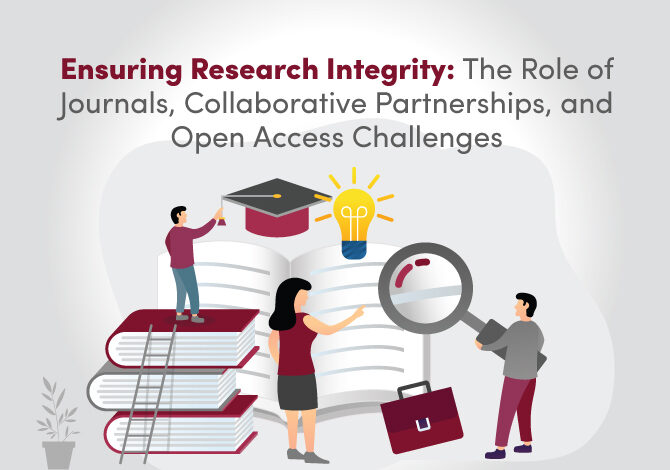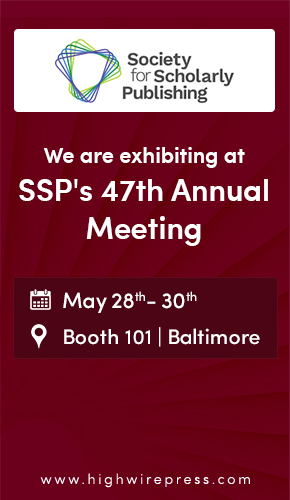This is the first of two parts summarizing the 16th NAS Journal Summit. Part 1 covers discussions from Day 1 (March 19, 2025), focusing on the role of journals in research integrity, partnerships to support integrity, and the challenges of Open Access in a fragmented publishing landscape. Part 2 will cover Day 2’s exploration of artificial intelligence (AI) in science and scholarly publishing. The summit was conducted under Chatham House Rules, so names and affiliations have been intentionally omitted.
The Role of Journals in the Infrastructure of Trust
The summit opened with a focus on trust in science amid rising misinformation, disinformation, and research fraud. Participants emphasized that preventing misconduct must happen earlier in the research lifecycle, not just through journal intervention at publication. Stakeholders—including publishers, libraries, universities, and funders—each hold responsibility for safeguarding credibility. University administrations, for example, shape incentives through tenure and promotion criteria that often emphasize quantity of publications over impact, contributing to the “publish or perish” culture.
Libraries, once the final arbiters of quality through subscription decisions, now struggle with shifting roles under Open Access (OA) models. The rise of paper mills and widespread use of detection tools has exposed significant amounts of potentially fraudulent published content. This raises tough questions for libraries about the value of what they are purchasing or supporting via author publication fees. Some suggested libraries should wield their budgets more actively to pressure publishers into upholding integrity standards.
Preprints were highlighted for their potential to improve transparency, with platforms like bioRxiv and medRxiv cited as models. However, preprints also contribute to “version chaos”—with multiple versions of articles circulating, often uncoupled from retraction notices or updates. This creates confusion for readers and students learning to evaluate scholarly content. Participants stressed the need to clarify the version of record and better manage the growing complexity of scholarly outputs.
Conversations turned to the erosion of public trust in science, with comparisons made across international contexts. Panelists noted that public misunderstanding of the scientific process and results contributes to the weaponization of science. Communicating science’s impact on daily life—like clean water or public health—is seen as critical. Others advocated rethinking academic rewards to prioritize real-world impact over publication volume.
Data sharing presented another challenge. While there is growing consensus that data and code should be openly deposited, privacy concerns remain. Calls were made to eliminate vague “data available upon request” policies, which can obscure accountability and foster mistrust.
Collaborations and Tools for Supporting Research Integrity
The second session addressed how journals, institutions, and publishers can partner to strengthen research integrity. While journals are increasingly tasked with detecting fraud, many argued this responsibility lies primarily with institutions that directly manage researchers. Investigations are time-consuming, complex, and often beyond the resources of journal editorial offices.
Collaborative efforts like the STM Integrity Hub showcased emerging tools screening hundreds of thousands of papers for issues like duplicate submissions. AI-powered systems, including models adapted from the banking sector, are also being developed to predict potential retractions with 85% accuracy. Trust markers, such as researcher identity verification and image watermarking, were proposed as additional safeguards.
Participants acknowledged that true reform requires systemic change, including persistent integrity training and a rebalancing of risks and rewards. Some worried that focusing too heavily on policing misses the point—creating a culture of integrity is equally important. However, given the scale of the problem, calls were made for the industry to invest more seriously in integrity infrastructure, even if it enables journals to charge premium prices for quality assurance.
Open Access in a Fragmented Global Landscape
The final session of the day tackled the increasingly fragmented OA environment. Different funder mandates and global requirements have created financial and operational burdens for libraries, authors, and publishers. Libraries, in particular, described being caught between rising OA fees and shrinking budgets, often forced to prioritize institutional needs over communal scholarly benefits.
Panelists debated the sustainability of the current OA trajectory. Models like “Subscribe to Open” were offered as potential compromises. However, the rise of paper and data mills—estimated to impact around 2% of publications—amplifies concerns about OA’s vulnerability to abuse.
Peer review, described as essential but expensive, faces mounting strain as the system absorbs more content. Calls emerged to stop rewarding sheer article output and shift focus toward impactful research and data sharing. Concerns about budget cuts underscored the fragile financial underpinnings of current OA models. Participants lamented the lack of empirical data demonstrating OA’s positive impact on science, arguing for better metrics to guide future policies.
Looking Ahead: AI and the Future of Science and Publishing
Day 2 of the summit shifts focus to the rise of artificial intelligence in scientific research and scholarly publishing—examining both the risks and transformative potential AI brings to integrity, authorship, peer review, and knowledge dissemination.
Read the next part





